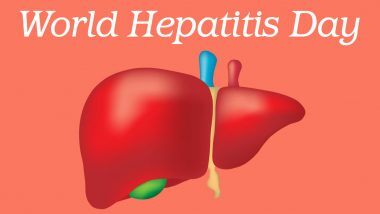Liver inflammation due to viral infection and also due to the usage of excess numberof drugs, toxins, alcohol and certain medicationsresults in hepatitis Worldwide, 290 million people are living with viral hepatitis unaware. Without finding the undiagnosed and linking them to care, millions will continue to suffer, and lives will be lost. On World Hepatitis Day, 28 July, we call on people from across the world to take action and raise awareness to find the “missing millions” which is the hepatitis day theme 2020.There are 5 main hepatitis viruses, denoted to as types A, B, C, D and E. These 5 types are of chief concern due to the burden of illness and death they cause and the potential for outbursts and epidemic spread. In specific, types B and C lead to chronic disease in hundreds of millions of people and, together, are the most common cause of liver cirrhosis and cancer.Hepatitis A and E are characteristically caused by the uptake of polluted food or water. Hepatitis B, C and D frequently occur as a result of parenteral interaction with infected body fluids. Common methods of transmission for these viruses include receipt of contaminated blood or blood products, invasive medical measuresby means of contaminated apparatus and for hepatitis B transmission from mother to baby at birth, from family member to child, and also by sexual contact. Serious infection may occur with inadequate or no symptoms, or may comprisesigns such as jaundice (yellowing of the skin and eyes), dark urine, extreme fatigue, nausea, vomiting and abdominal pain. We can prevent the infection by means of the following precautions;
- washing the hands cautiously after using the restroom and beforehandingestion
- safeguarding that food is fully cooked and correctly stored
- consumption only bottled water when traveling
- evading or shedding fruits and vegetables that may have been carry away or grown in contaminated water
- Use a barrier technique, such as a condom, during sex.
- Evade sharing toothbrushes, razors, and manicure instruments.
- take safety measures to avoid infection and transmission of hepatitis
Various types of hepatitis have different probabilities of retrieval.
Hepatitis A: This type usually steadfastness within 2 months without having any long-term effects, and the person will have lifetime immunity subsequently.
Hepatitis B: Maximum adults improve within 90 days and have lifetime immunity. Though, 90% of infants, 20% of older children, and 5% of adults develop a chronic infection. This can lead to severe difficulties, such as liver cancer or cirrhosis.
Hepatitis C: The infection is chronic in 75–85% of people who have it, and 1–5% of people will practice life intimidatingproblems. Treatment is existing, but 15–25% of people will recover without it.
Add liver friendly foods in your diet:
Blueberries and cranberries: Rich in antioxidants named anthocyanins
Grape: Help lower inflammation, prevent damage and increase antioxidant
Beetroot juice: Beetroot juice contains nitrates and antioxidants called betalains
Fatty fish: Fishes rich in omega-3 fatty acids – salmon, mackerel, sardines
Coffee: Decreases inflammation and increases levels of the antioxidant glutathione.
Prickly pear: Normalize enzyme and cholesterol levels
Cruciferous vegetables: Includes brussels sprouts, broccoli and mustard greens are known for their high fibre content and distinctive taste.
Nuts: Rich in antioxidant vitamin E

“Eat healthy food avoid alcohol and smoking, keep your liver healthy”








